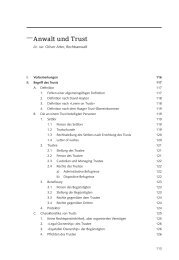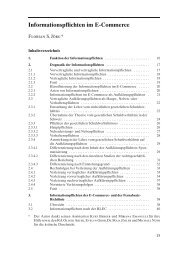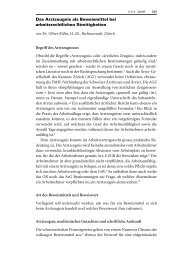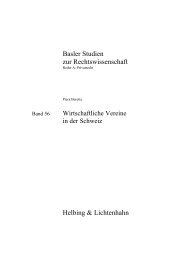Rechtliche Aspekte der Musikindustrie
Rechtliche Aspekte der Musikindustrie
Rechtliche Aspekte der Musikindustrie
Sie wollen auch ein ePaper? Erhöhen Sie die Reichweite Ihrer Titel.
YUMPU macht aus Druck-PDFs automatisch weboptimierte ePaper, die Google liebt.
A LESCH S TAEHELIN<br />
Boys obtained a license from ECM Records to use portions of the sound<br />
recording of "Choir" in various renditions of their song "Pass the Mic" in<br />
exchange for a one-time fee of $1000 12 .Beastie Boys did not obtain a license<br />
from Newton to use the un<strong>der</strong>lying composition.<br />
The portion of the composition at issue consists of three notes, C-D<br />
flat-C, sung over a background C note played on the flute. The score to<br />
"Choir" also indicates that the entire song should be played in a "largo/<br />
senza-misura" tempo, meaning "slowly/withoutmeasure." The parties disagree<br />
about whether two additional elements appear in the score. First,<br />
Newton argues that the score contains an instruction that requires overblowing<br />
the background C note that is played on the flute. Second, Newton<br />
argues that multiphonics are part of the composition because they are necessarily<br />
created when a performer follows the instructions on the score to<br />
simultaneously play the flute note and sing the vocal notes. Because we<br />
review the district court's grant of summary judgment to the Beastie Boys,<br />
we must construe the evidence in Newton's favor. We therefore assume<br />
that these two elements are part of the "Choir" composition. As we will<br />
discuss more fully below, there are other elements that are part of Newton's<br />
performance that was captured in the sound recording, but that do<br />
not appear in the score.<br />
The dispute between Newton and Beastie Boys centers around the copyright<br />
implications of the practice of sampling, a practice now common<br />
to many types of popular music. Sampling entails the incorporation of<br />
short segments of prior sound recordings into new recordings. The practice<br />
originated in Jamaica in the 1960s, when disc jockeys (DJs) used portable<br />
sound systems to mix segments of prior recordings into new mixes,<br />
which they would overlay with chanted or "scatted" vocals. Sampling<br />
migrated to the United States and developed throughout the 1970s, using<br />
the analog technologies of the time. The digital sampling involved here<br />
developed in the early 1980s with the advent of digital synthesizers ha-<br />
12 In relevant part,the license reads as follows:<br />
[ECM Records], as owner of the applicable sound recording rights, including but not<br />
limited to recording, reproduction, synchronization and performing rights, grants to<br />
Beastie Boys, its licensees, assigns, employees and agents (the "Licensed Parties"), the<br />
irrevocable non-exclusive license and right to copy portions (if any) of the sound<br />
recording entitled "Choir" performed by James Newton (the "Sample"); to embody the<br />
sample in some or all versions of the selection entitled "Pass the Mic" by the Beastie<br />
Boys (all versions of "Pass the Mic" which contain the Sample are referred to as the<br />
"Selection"); to reproduce, distribute and otherwise exploit the Sample as part of the<br />
Selection in all media, whether now known or hereinafter developed, including, without<br />
limitation, all record formats throughout the world in perpetuity.<br />
36






